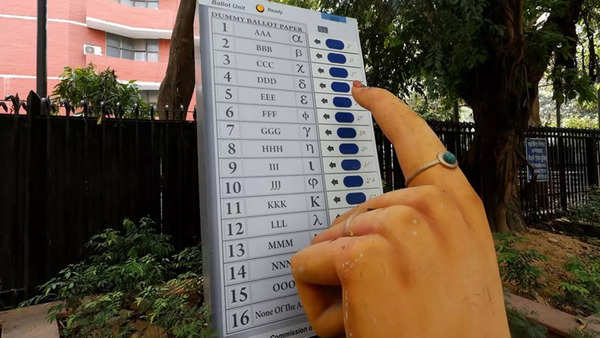In a remarkable display of democratic engagement, Baramulla constituency witnessed an unprecedented voter turnout, with 59 percent of the electorate casting their ballots. This turnout is the highest recorded since 1984, signalling a significant shift in the political landscape of Jammu and Kashmir. The electorate’s robust participation reflects their resilience in the face of longstanding political and security challenges. The last four decades have seen fluctuating voter turnouts in Baramulla, often influenced by the region’s volatile political and security situation. The constituency’s previous high was in 1984 with a 61.09 percent turnout, a figure that seemed unattainable in recent years. The 2019 elections, for instance, saw only 37.41 percent participation. This year’s 59 percent turnout is thus a historic achievement, underscoring the electorate’s renewed commitment to the democratic process.
Several factors contributed to this remarkable turnout. Aggressive campaigning by major political players, including the National Conference (NC), People’s Democratic Party (PDP) People’s Conference (PC), and the Awami Ittehad Party (AIP), played a significant role. Their concerted efforts to engage with the voters and address their concerns likely fuelled the increased participation. Moreover, the effective management and extensive preparations by the election authorities, including the deployment of 2,103 polling stations equipped with CCTV surveillance, ensured a smooth and secure voting process. The high-stakes election saw prominent candidates like Omar Abdullah of the NC, Sajjad Lone of the PC, and the jailed AIP leader Engineer Rashid, among others. Their campaigns were characterised by a blend of traditional outreach and modern communication strategies aimed at galvanising the electorate.
Since the abrogation of Article 370, all eyes have been on Jammu and Kashmir, particularly the Kashmir region. The BJP chose not to field candidates in any of the three constituencies in the Kashmir Division. Notably, the 59 percent voter turnout in the Baramulla constituency aligns closely with the national voting average, indicating that the people of Kashmir are as engaged in the electoral process as the rest of the country. This substantial turnout, despite terror attacks in the days leading up to the polling, reflects the people’s trust. Once again, the cross-border sponsors of terrorism have failed to gauge the sentiment of the Kashmiri people, who recognise the value of a democratic setup where their elected representatives can address and resolve their issues. The candidature of both Mehbooba Mufti and Omar Abdullah for Parliament underscores the importance of these elections. The main takeaway on the election day itself was peace and order, a notable departure from the violence that has marred the region several times in the past elections. This smooth conduct was the result of meticulous planning and stringent security measures, including extensive CCTV monitoring.
The historic turnout in Baramulla is a clear mandate for democracy. The electoral process in Baramulla also sends a powerful message about the importance of democratic engagement. In a region often perceived through the lens of conflict and instability, the voters of Baramulla have demonstrated that democracy remains a viable and vital pathway to achieving their goals. Their participation is a testament to their belief in the power of the ballot over the bullet. The 59 percent turnout in Baramulla is not just a numerical achievement; it is a profound statement of democratic resilience and hope. It calls upon the political leadership to rise to the occasion, to deliver on their promises, and to work towards a better future with a commitment to democratic principles. The people of Baramulla have set a high bar, and it is now up to their leaders to meet it, with the ultimate winner being democracy.
Trending Now
E-Paper


